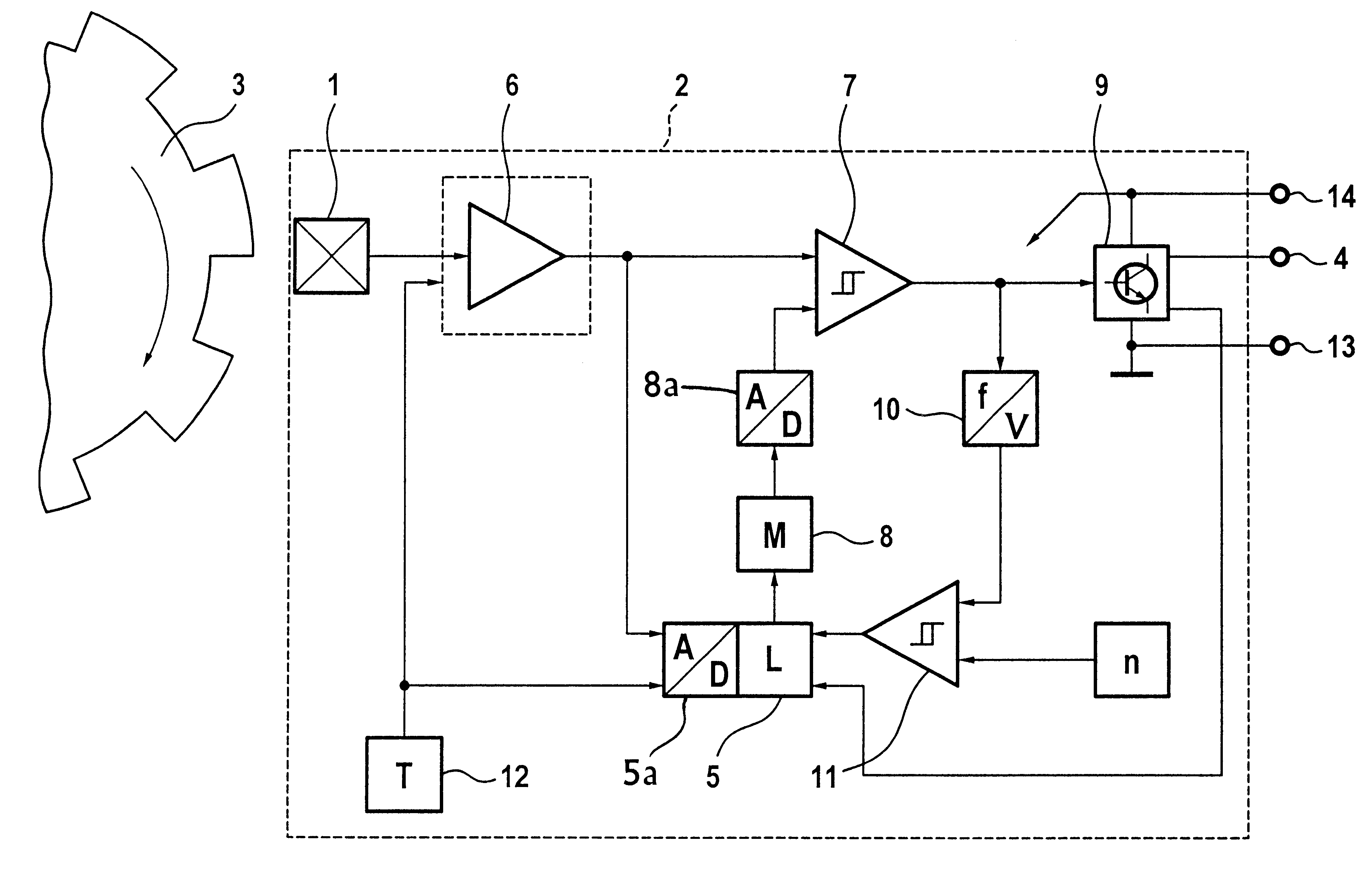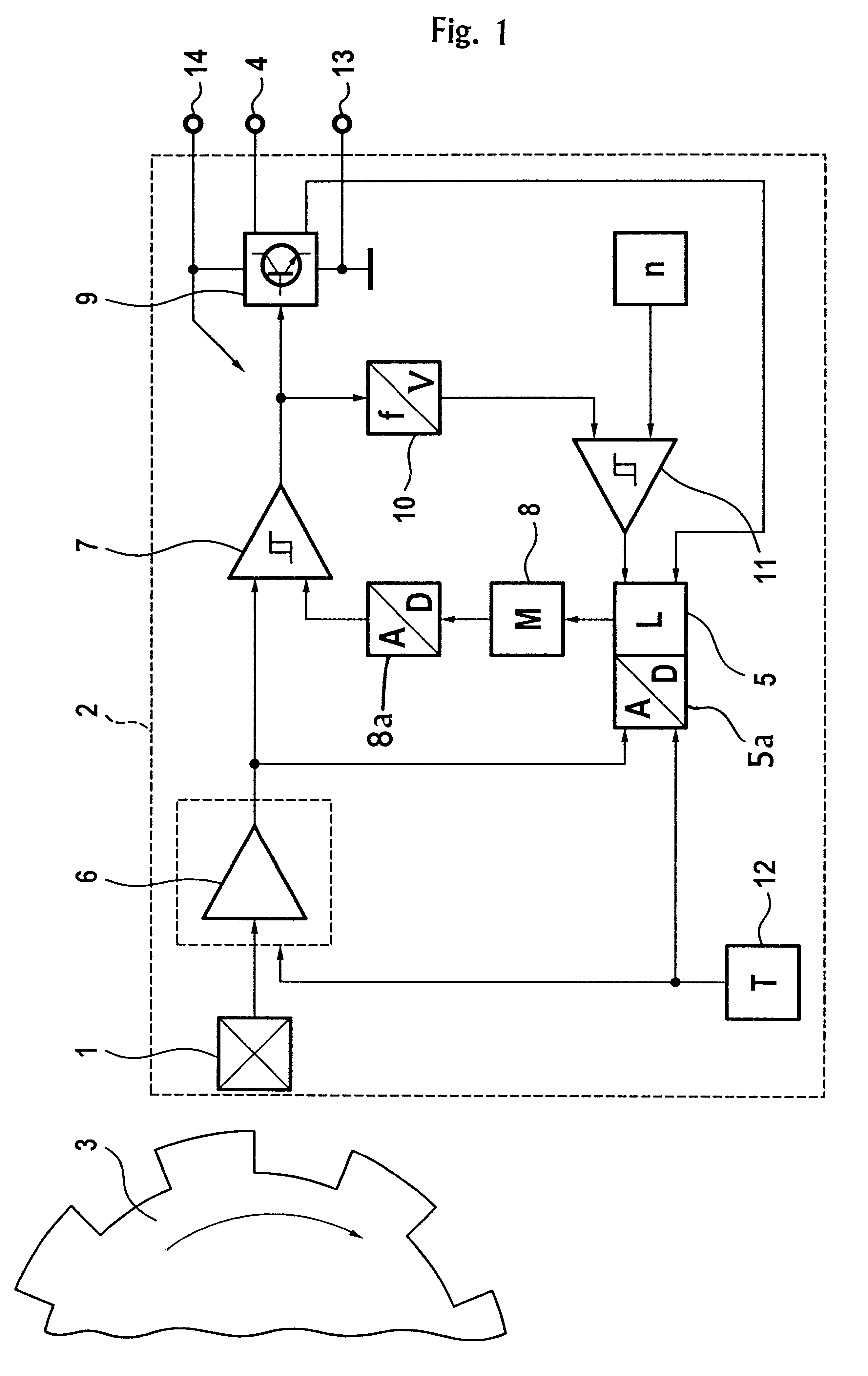Self-adaptive sensor unit for determining pulse switching points
a self-adaptive, sensor technology, applied in the direction of digital computer details, electrical control, instruments, etc., can solve the problems of magnetic pulses, affecting the count result or phase shift, and reducing the signal strength and the gradient of signal edges
- Summary
- Abstract
- Description
- Claims
- Application Information
AI Technical Summary
Benefits of technology
Problems solved by technology
Method used
Image
Examples
Embodiment Construction
In the drawing, a rotational speed sensor 2 according to the present invention is shown with a detector element 1 arranged adjacent to a pulse wheel 3 made of ferromagnetic material. The sensor 2 records the disturbances, produced by the pulse wheel 3. In a preferred embodiment, the detector element 1 comprises a Hall effect detector with a permanent magnet incorporated therein. The sensor 2 generates a signal in re sponse to a change in the magnetic field in the Hall effect detector 1 and transmits an appropriate binary voltage signal via an output terminal 4.
Alternatively, the detector 1 may comprise a magneto-resistive resistor instead of a Hall effect detector. Furthermore, if the pulse wheel 3 comprises a magnetic pole wheel, the permanent magnet in the Hall effect detector is not required and may be dispensed with.
For control purposes and for automatically setting the switching points, the sensor 2 further comprises a logic circuit 5 with an analog / digital converter 5a. The lo...
PUM
 Login to View More
Login to View More Abstract
Description
Claims
Application Information
 Login to View More
Login to View More - R&D
- Intellectual Property
- Life Sciences
- Materials
- Tech Scout
- Unparalleled Data Quality
- Higher Quality Content
- 60% Fewer Hallucinations
Browse by: Latest US Patents, China's latest patents, Technical Efficacy Thesaurus, Application Domain, Technology Topic, Popular Technical Reports.
© 2025 PatSnap. All rights reserved.Legal|Privacy policy|Modern Slavery Act Transparency Statement|Sitemap|About US| Contact US: help@patsnap.com


